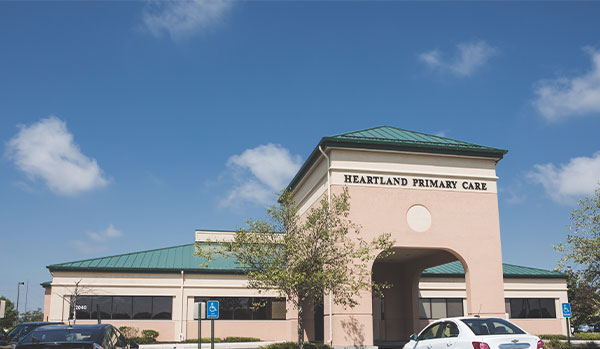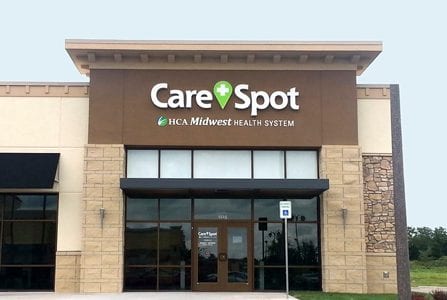Recognizing the Duty of Urgent Treatment in Giving Timely Therapy for Non-Life-Threatening Conditions
Urgent care centers have become a vital part of the healthcare landscape, attending to the instant requirements of clients with non-life-threatening conditions. By providing timely and obtainable clinical solutions, these centers properly connect the space between health care and emergency divisions. Nevertheless, the ramifications of their role extend past plain ease, triggering a better evaluation of when and how these centers are used. Understanding the subtleties of immediate treatment might considerably influence individual results and the overall performance of health care delivery. What aspects add to their growing value in contemporary medication?
What Is Urgent Treatment?
Urgent treatment refers to a group of clinical solutions designed to deal with non-life-threatening conditions that need prompt attention. These facilities offer as an intermediary between health care doctors and emergency clinic, supplying a convenient alternative for patients who require punctual care without the comprehensive waiting times usually connected with emergency departments.
Urgent treatment facilities are normally staffed by clinical professionals, including medical professionals, registered nurse practitioners, and physician assistants, who are educated to identify and deal with a vast variety of problems. Usual solutions provided by these centers consist of therapy for small injuries, illnesses, and infections, as well as diagnostic tests such as X-rays and laboratory job.
Additionally, urgent treatment centers frequently approve walk-in patients, getting rid of the demand for visits. Overall, immediate care plays a crucial role in the health care system, making certain patients can access important medical solutions without delay and efficiently.

When to seek treatment at an urgent treatment center rather of a primary treatment doctor or an emergency space,Numerous people may locate themselves unpredictable regarding. Immediate treatment is designed to resolve non-life-threatening conditions that need prompt attention however are not extreme enough to warrant an emergency clinic browse through.
Normally, one must consider immediate treatment for issues such as small fractures, strains, cuts requiring stitches, or infections like urinary system system infections. In addition, cool or influenza signs, rashes, and allergies can additionally be appropriately managed in this setting.
It is essential to note that immediate treatment is not ideal for dangerous emergencies, such as breast pain, difficulty breathing, or serious blood loss, which require immediate emergency clinic intervention.
Individuals that lack access to a medical care medical professional or can not secure a prompt visit may likewise benefit from urgent treatment services. Inevitably, comprehending when to make use of urgent treatment can cause more reliable medical care delivery, allowing patients to obtain the ideal level of care based on their specific health needs.
Advantages of Urgent Treatment Centers
Choosing immediate treatment centers for non-life-threatening problems uses a number of advantages that boost individual experience and accessibility. One primary advantage is the reduced wait times compared to traditional emergency clinic. Immediate treatment centers normally operate a first-come, first-served basis, allowing individuals to obtain prompt clinical interest without the long hold-ups often connected with health center setups.
In addition, urgent care facilities supply extended hours, including weekend breaks and nights, suiting clients with varying timetables. This adaptability makes certain that individuals can seek care when it is most hassle-free for them, better advertising timely treatment.

In addition, these facilities typically use a detailed series of solutions, including analysis examinations and small treatments, all under one roofing. This combination of services not just simplifies the patient experience but likewise cultivates an extra cohesive strategy to managing non-life-threatening wellness problems, eventually benefiting overall person end results.
Usual Conditions Dealt With
At urgent care centers, a range of non-life-threatening problems can be efficiently treated, providing people with prompt and easily accessible medical assistance. These centers are especially proficient at addressing issues that need punctual interest but do not position a prompt threat to life or arm or leg.
Typical conditions treated at immediate care centers include small injuries such as sprains, cracks, and pressures. Furthermore, they manage diseases like colds, flu, and infections, including urinary system system infections and sinus problems. Skin problem, ranging from rashes to insect attacks, are additionally regularly resolved. Urgent treatment facilities are geared up to do essential analysis examinations, such as X-rays and laboratory tests, enabling them to provide thorough Get More Information care.
Furthermore, immediate care carriers can administer inoculations, helping to avoid the spread of contagious conditions - Urgent Care. They likewise supply solutions for small treatments, such as suturing injuries or draining pipes abscesses. By using these varied services, immediate treatment centers play a crucial role in connecting the space in between medical care and emergency solutions, making sure individuals obtain prompt treatment for a variety of conditions without the requirement for long haul times commonly related to emergency clinic
Exactly How Urgent Treatment Supports Medical Care System
Immediate treatment centers play an essential duty in sustaining the general healthcare system by alleviating the problem on emergency situation divisions and offering prompt access to treatment for non-life-threatening conditions. By taking care of situations such as minor injuries, infections, and diseases, urgent care centers permit emergency divisions to concentrate on more critical patients calling for immediate attention.
Moreover, urgent treatment facilities improve health care availability, providing extended hours and an easier alternative to standard health care settings. This availability is specifically advantageous for people who may not have a routine medical professional visit or that require immediate treatment outside of regular workplace hours. Consequently, urgent care centers efficiently minimize improve and wait times client contentment.
In addition, immediate treatment centers add to set you back savings for both patients and the health care system by supplying lower-cost solutions compared to emergency departments. This financial efficiency is vital in an era of rising healthcare prices, permitting people to obtain needed treatment without sustaining excessively high expenditures.
Verdict
To conclude, immediate care facilities play an important role in the healthcare system by supplying punctual treatment for non-life-threatening conditions. By linking the void in between medical care and emergency areas, these facilities guarantee that patients obtain timely medical focus without the prolonged image source wait times typically linked with emergency situation departments. The accessibility and performance of immediate care facilities contribute considerably to alleviating the total concern on healthcare resources, improving client end results, and promoting a more efficient healthcare distribution system.
Urgent treatment facilities have actually emerged as a crucial part of the medical care landscape, dealing with the prompt demands of clients with non-life-threatening conditions. Urgent care visits normally sustain lower out-of-pocket expenses contrasted to emergency division brows through, making care extra budget-friendly for clients without compromising quality. Urgent treatment facilities are furnished to execute required diagnostic tests, such as X-rays and laboratory tests, allowing them to provide detailed treatment.
By offering these varied solutions, urgent care centers play an essential role in connecting the void in between primary care and emergency services, making certain clients get timely therapy for a wide range of conditions without the need for lengthy delay times typically connected with emergency situation areas.
Moreover, urgent care centers enhance health care access, providing extended hours and a more hassle-free alternative to conventional main care settings.